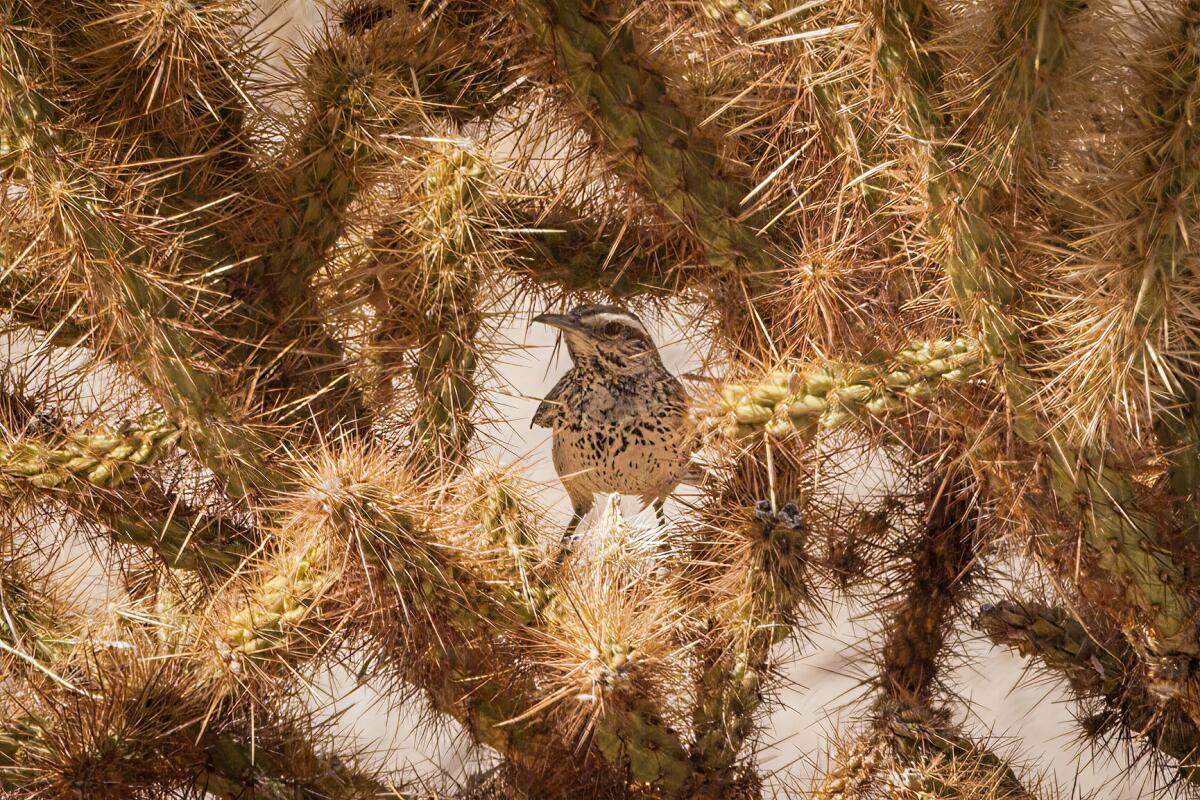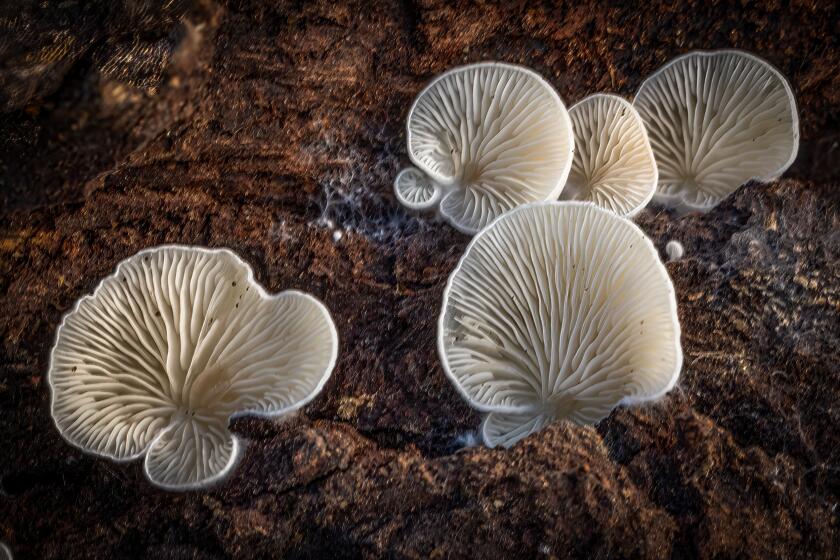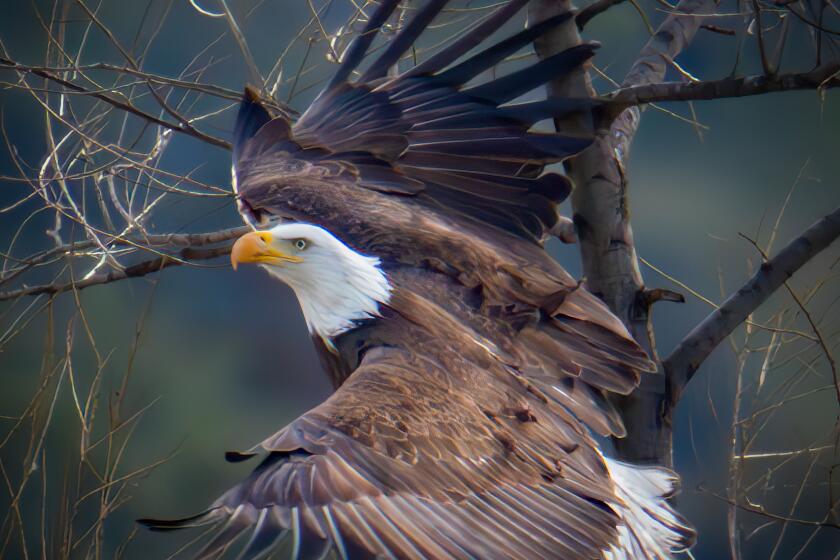Column: Little bird feeds, perches and nests among ominous cactus spines

Ernie Cowan’s Outdoors column
Brooding clouds were dancing across the tops of the San Ysidro Mountains as an early spring storm swept eastward from the coast.
As they have done for eons, the bouldery peaks were blocking the rainfall from reaching the desert where a cloudless sky allowed the cholla cactus to glow in the soft morning light.
As the storm raged 4,000 feet above, there was stillness on the desert floor, except for something bouncing around among the menacing spines of the cactus.
It was a weekday morning, and I was sitting quietly alone on a bench near the Anza-Borrego Desert State Park Visitor Center. It would be another hour before it opened, and I had the desert all to myself ... except for whatever was being so active in the cactus.
Readers know that one of my favorite activities is to “sit and see.” I find an interesting spot and just sit and watch for an hour or so. As I become part of the landscape, rather than a passing visitor, the rhythm of nature returns to normal.
Other than a passing stink bug, black tailed jackrabbit and a few buzzing hummingbirds feeding on the bright red chuparosa blossoms, there had not been much activity.
Patience paid off.
As I sat motionless, the mystery creature appeared from the cactus. It was a cactus wren who emerged from the spiny thicket, perching on top for a moment and sounding off with its raspy, single note repeated a dozen times or so. The call has often been described as the sound of someone trying to start a car.
The wren ignored my presence and continued to move around, first dropping to the ground where he poked away looking for insects and then bouncing back up into the thorny cactus as if landing on a padded perch.
I was fascinated by this bird that feeds, perches and nests among the ominous cactus spines.

I’ve had to pick these cactus needles from fingers, shins and ankles many times, but the wren happily lives life unscathed by this desert plant.
Cactus wrens are the largest of the wren species, and the nonmigratory bird has adapted well to the harsh and arid environment it calls home.
It will drink if water is available but can also survive during the hottest and driest times of the year only on the moisture it gets from a diet of insects, small reptiles, fruit and the wounds of cactus.
It was time to see if I could get some good images of my new avian friend. I could get only so close before he dashed off to a safe distance. It became a cat-and-mouse game.
While following the wren, I was excited to discover one of their pouch nests cradled in the prickly arms of a cactus.

It was typical of what the wrens construct, but there was no activity so it may have been one of several nests that they build to use as roosting sites throughout the year.
I took a quick photo and then dashed after the elusive bird.
My “sit and see” was now a “chase and see,” but the wren did let me get close enough a few times for a few good pictures.
Maybe this was his idea of fun on a soft spring morning in the desert.
The cycle of nature continues.
Sunday, March 20, is the first day of spring and a glorious time of transition in the world of wild birds.
I spotted the first hooded oriole at Mt. Hoo this week. Soon, these neon yellow and jet-black birds will be nesting in nearby palms and feeding at my nectar feeders.
Like hummingbirds, they enjoy the same mixture of one part sugar added to four parts boiling water, but their larger beaks don’t allow them to feed at a hummingbird feeder.
For orioles, I have found the best feeder to be the First Nature 32-ounce oriole feeder. They are inexpensive, easy to clean, and the feeding holes are designed specifically for the oriole beaks. Hummingbirds will also use them.
House wrens are also beginning their nesting cycle, and they will often nest in birdhouses provided by homeowners. Make sure to get a box specifically designed for the tiny wrens and placed about 5 to 10 feet above ground with clear access. You can find dimensions online. The most important item is the size of the entry hole, which should be about an inch in diameter to keep larger, predator birds out.
I have a small nest camera in our wren box and have had the joy of watching the nesting cycle for the past four years.
So far this season, a male house wren has deposited a few twigs in the box, hoping to attract an interested female.
Once nesting begins, I plan to be livestreaming on my Mt. Hoo Wren Nesting Facebook page.
As the orioles arrive from winter homes in Mexico, the white-crowned sparrows and yellow-rumped warblers that have brightened our winter gardens and will be departing for summer homes to the north.
Cowan is a freelance columnist. Email ernie@packtrain.com or visit erniesoutdoors.blogspot.com.
Get Essential San Diego, weekday mornings
Get top headlines from the Union-Tribune in your inbox weekday mornings, including top news, local, sports, business, entertainment and opinion.
You may occasionally receive promotional content from the San Diego Union-Tribune.










